
Ranunculus And Peonies Flowering
Hello friends,
Today I wanted to share with you some of the ranunculus and peony plants that flowered in the garden this November, bringing such wonderful colour into the garden after the daffodil and tulip flowers finished, but before the dahlias started flowering this summer.
First up are the ranunculus varieties that I grew from seed last autumn. I bought a bunch of imported seeds from Buds & Bloom, including the varieties French Amandine Purple Jean, Italian Rosa Chairo, Italian Rosa, Italian Pastello 1, Italian Pastello 2, and Italian Bianco Sfumato.
Ranunculus corms are almost impossible to import into New Zealand due to strict biosecurity laws, but seed stocks are much easier to get into the country, which is what Buds & Bloom did last summer this year. Ranunculus plants from seeds are pretty tricky to grow, but I managed to get some germinating in autumn, and then grew them up over the winter, before planting them into the ground very early this spring. It didn't take them very long to grow and begin flowering, and here are a few that I photographed.
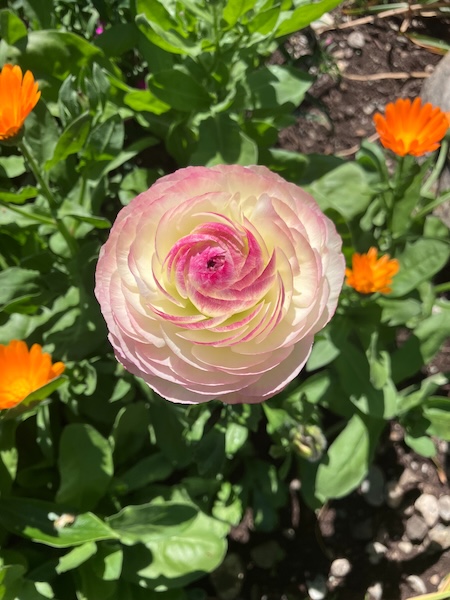
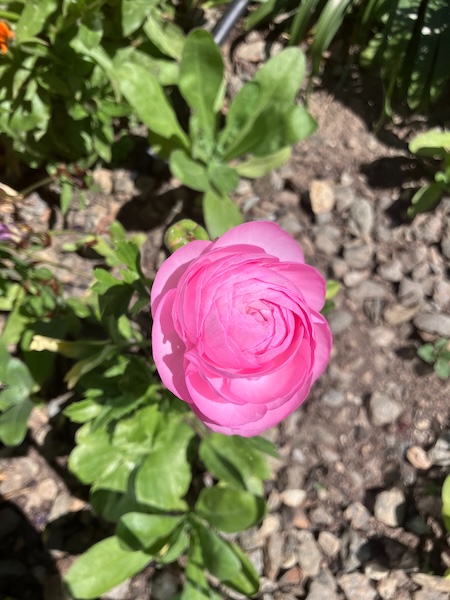
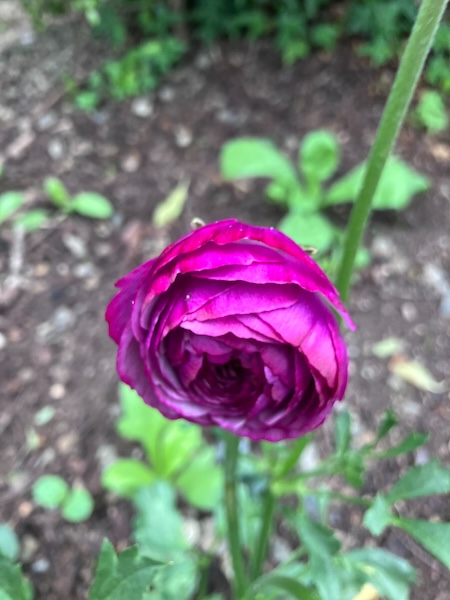
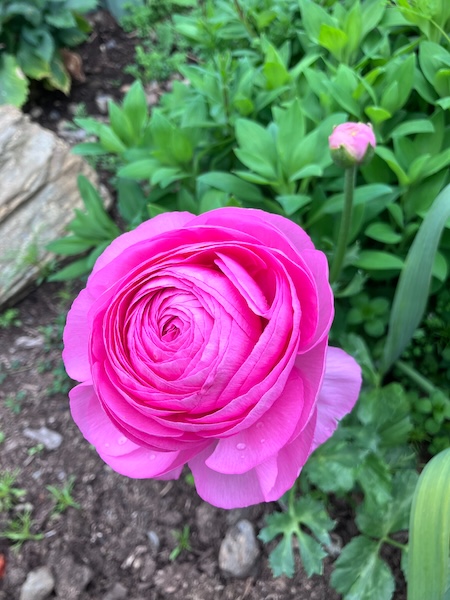
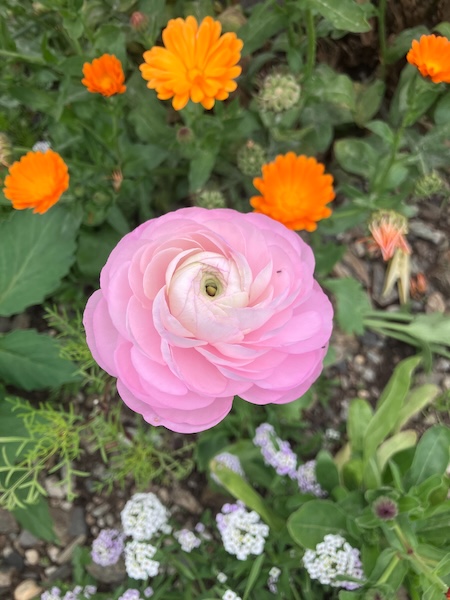
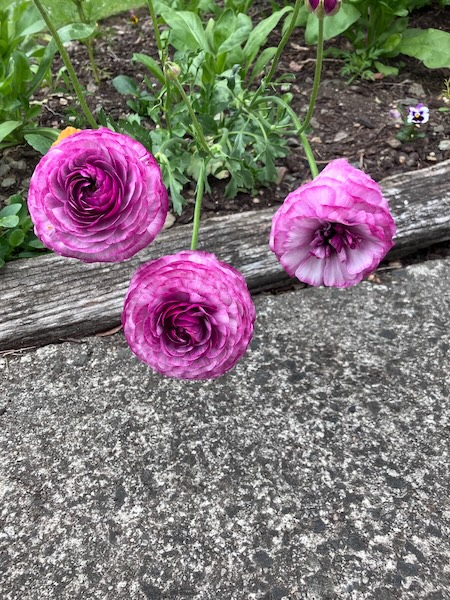
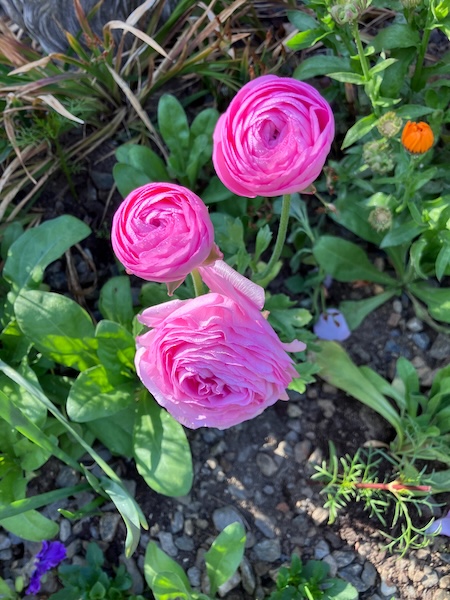
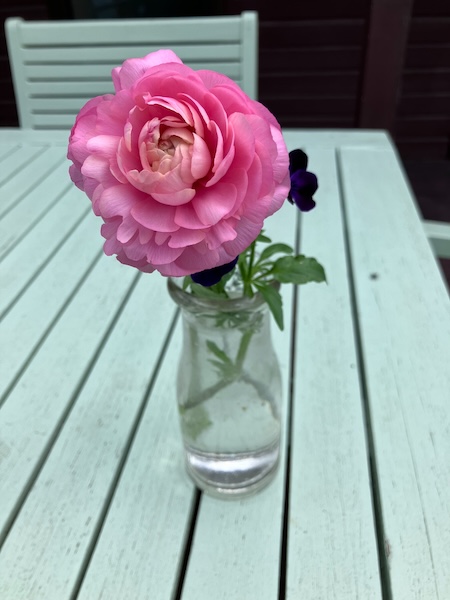
The range of colours from the imported ranunculus varieties was just stunning, with lots of pastel marshmallow like colours, and the flowers themselves were just very soft and squishy, perfect for cutting and then putting into a vase to enjoy inside the home.
Flowering at the same time were all my unknown peony varieties. Most of them were already in the garden when we moved here in 2019, and a couple of others are peonies that I bought but then have moved a couple of times over the years, and now I can't remember any of their names...
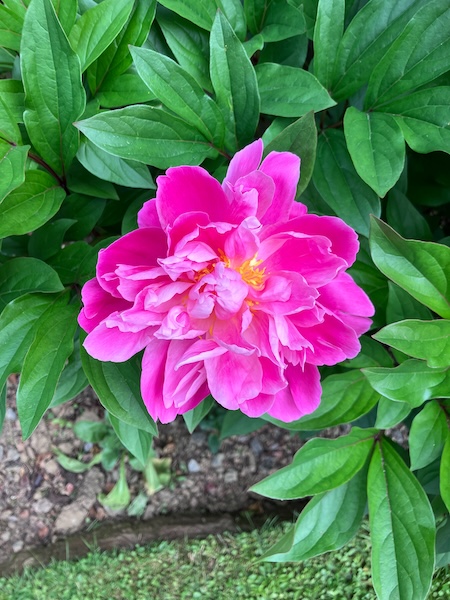
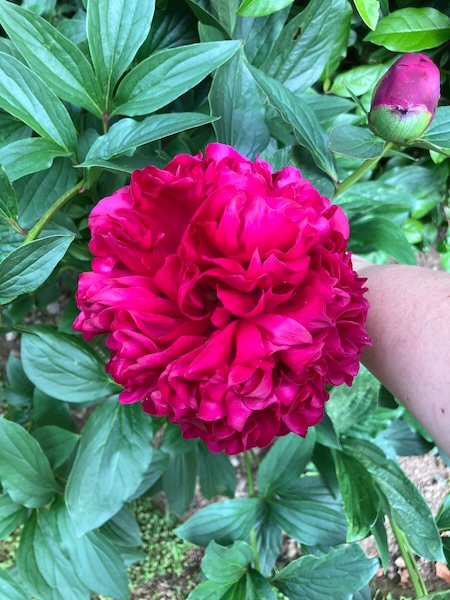
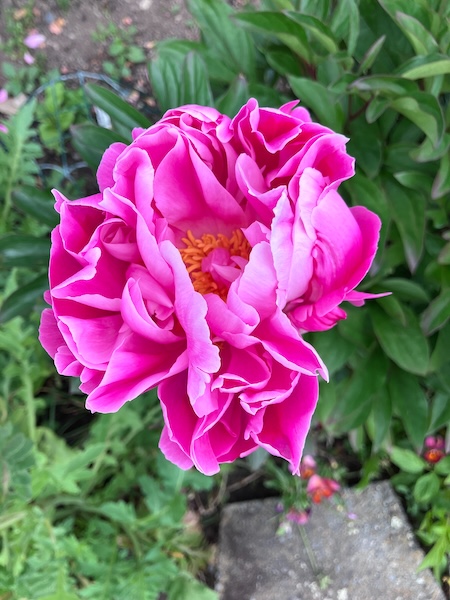
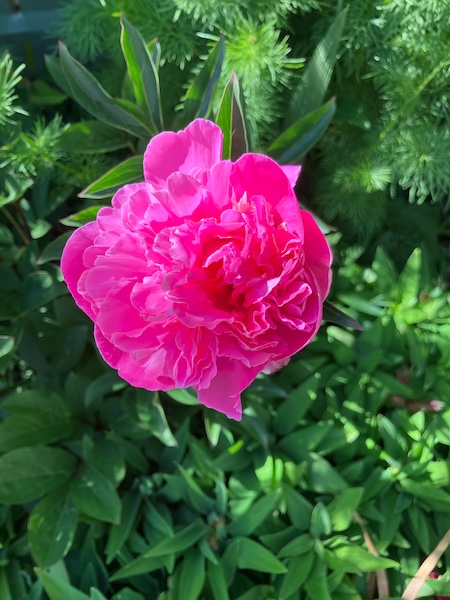
I leave them to flower in the garden rather than bringing them inside our home because hubby and my allergies are too severe to tolerate them, and also we have two very bitey indoor cats (Missy and Rosie) who would love to eat them if the blooms were brought inside.
I also have three new peonies growing this year, Duchesse de Nemours, Dr Alexander Fleming, and Sarah Bernhardt, but it will be a few years before they will be flowering and putting on a show in the garden. I can't wait to see them bud and bloom in a couple of years time...
Have a wonderful day
Julie-Ann
Want to discuss my post? Feel free to chat with me on Instagram or Mastodon or Bluesky, and now also Facebook.
Kahikatea Farm Soapwort Plant Order
Hello friends,
After failing once again to grow my own Soapwort plant from seed this year, it was time to source the plant from somewhere else.
I've been very keen for a while now to grow Soapwort so I can harvest the plant material to turn it into my own natural gentle soap solution for cleaning, and also for washing fabrics around the house. Soapwort solutions are used by museums and art galleries to clean works of art and fabrics, and a Soapwort washing solution has even been used to clean the Bayeux tapestry in the past.
After searching the internet, I found that Kahikatea Farm had Soapwort seedlings for sale, as well as some other natural dye plants on my wish list. Not wanting to waste empty space in the courier box, I put in an order for other natural dye plants including Woad, Dyer's Chamomile, White Yarrow, and Meadowsweet.

When the box arrived, and the plants were removed from their packaging safe and sound, it was time to label them with waterproof labels, and plant them out in the natural dye garden.
My Soapwort plant has lots of stems growing, so hopefully I can harvest some this growing season.

I bought a replacement Woad plant after losing the one I had growing in the garden, when I transplanted it into the new natural dyeing bed in winter this year.

I also invested in a Dyer's Chamomile plant, and I'm excited to harvest the flowers and then dye with them, so I can produce warm yellow natural dye tones this growing season.

I bought a white Yarrow plant for natural dyeing after watching Jente's YouTube Channel "Mijn Wolden". Jente is a spinner, natural dyer, and knitter from Belgium, and she is one of my favorite crafting YouTubers. If you want to have a good time watching a friendly neighbourhood chaos goblin and her fiber shenanigans (in her words), you need to follow Jente. In a recent episode on her vlog, Jente natural dyed yarn with Yarrow to produce yellow and dark green tones (using an iron bath).

And finally I bought a Meadowsweet seedling for the garden. Meadowsweet is a perennial herb that prefers to grow in damp conditions, and it has frothy clusters of cream-white flowers and a sweet scent. It has a number of natural medicinal uses, as it contains aspirin like compounds, but I really just like the plant in general, and wanted to add it to my garden.

With all these seedlings now planted into the garden, I look forward to seeing them grow, and harvest plant material from them over the summer.
Have a wonderful day
Julie-Ann
Want to discuss my post? Feel free to chat with me on Instagram or Mastodon or Bluesky, and now also Facebook.
I'm In The December 2025 Issue Of The New Zealand Gardener Magazine
Hello friends,
An exciting opportunity happened a couple of months ago when the New Zealand Gardener magazine contacted me and wanted to chat about my blogging adventures in growing, harvesting, and processing my own sugar beet, as part of a wider article about kiwi gardeners growing their own sugar in various forms (including sugar cane and sugar maple).
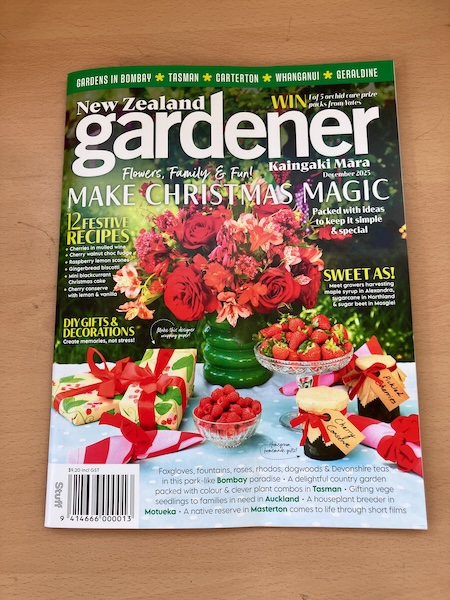
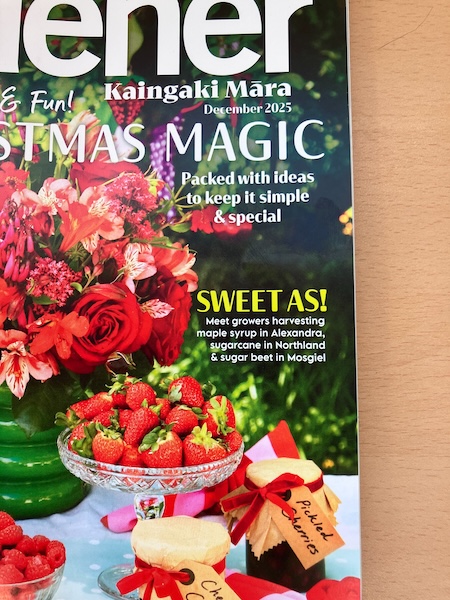
I was quite happy to do this as I'm a big fan of the magazine (I buy a copy of it each month), and New Zealand Gardener is such a great source of local news and advice for New Zealand gardeners.
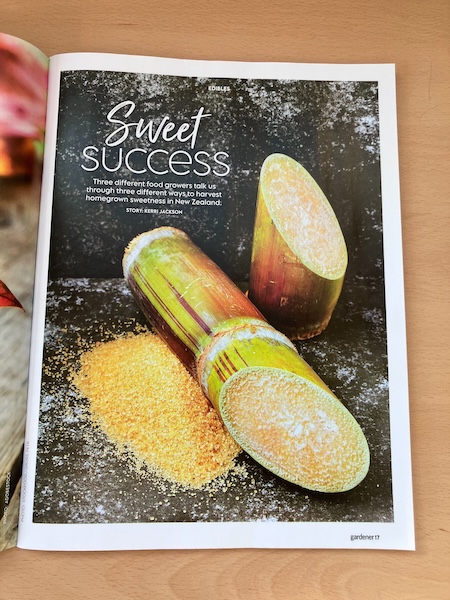
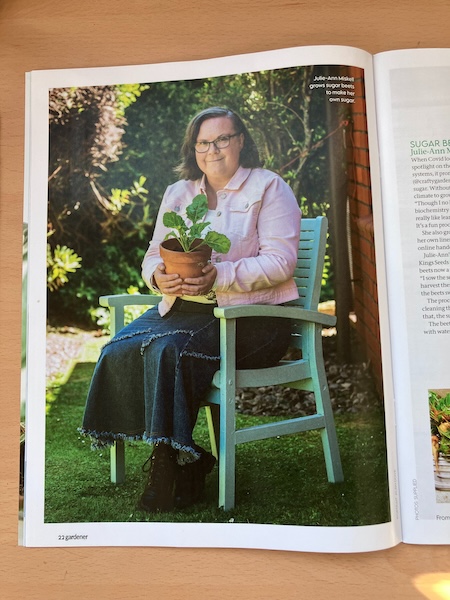
They used two of my blog posts as a guide for growing and harvesting sugar beets, as well as photos of mine for their article, along with a phone interview I did with them in early October 2025. If you want to read more about growing and processing sugar beet plants from these blog posts, here is where you can find them:
1. Making Sugar From Homegrown Sugar Beets
2. Harvesting My Own Sugar Beet Seeds
If you're on the hunt for sugar beet seeds so you can try growing your own sugar, sadly Kings Seed no longer stocks the seed, but I grew sugar beet plants from the last of my sugar beet seed stock, and waited two years until they had flowered and set seed, to harvest my own sugar beet seed earlier this year in autumn 2025.
I have some of those sugar beet seeds available for sale in my online store Hearth & Oak. There is a limited amount for sale, as I've sowed a lot of the seed in my own garden this spring. It would be good however, to have sugar beet seeds in the hands of more New Zealand gardeners, so we don't lose sugar beet seed stock in New Zealand.
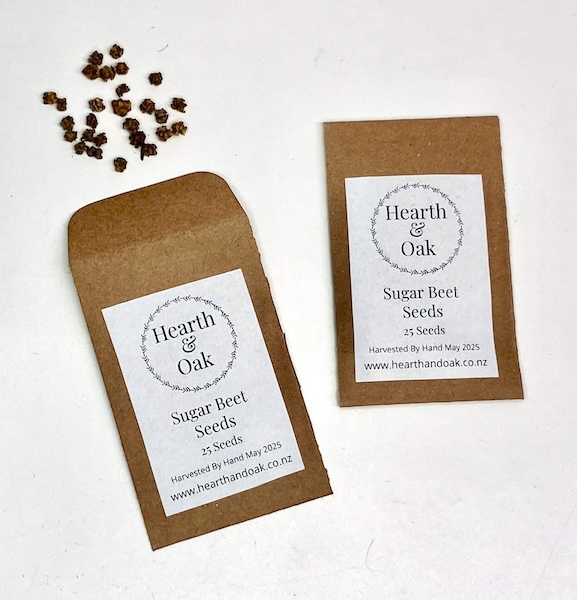
As for me, I'm quite chuffed to be included in my favorite gardening magazine, and I never thought a couple of years ago when I started blogging about growing sugar beet in my backyard, that it would lead to this opportunity...
Have a wonderful day
Julie-Ann
Want to discuss my post? Feel free to chat with me on Instagram or Mastodon or Bluesky, and now also Facebook.
November Dahlia Update
Hello friends,
Yes, I did buy more dahlias after I said my garden was completely full and I couldn't fit any more in, but I promise this time I had good reasons to do so...
First of all, I lost a number of dahlias this spring due to tubers rotting/eyes not forming, including:
- Arthur Hambley (DP)
- Cafe Au Lait (DP)
- Islander (DP)
- Muchacha (Dec)
- Salmon Runner (Dec)
- Tranquility (Col)
- Impression Fomoso (Col)
- The Phantom (Ane)
From my observations over the past couple of years, dinner plate dahlias seem more prone to rotting, and for this reason I am not planning on buying anymore dinner plate dahlias in the future, they're just not worth spending all that money on, just to end up rotting in spring.
Secondly, when my NZ Bulbs dahlia order arrived in early October, one of my collarette dahlias, Dark Tiger, was not in the package due to them being out of stock, and they replaced it with the waterlily dahlia, Twiggy. The dahlias in this order weren't in the best condition, and two of them (Tranquility and Impression Fomoso) are actually in the lost dahlias list. They didn't form any eyes at all, and then they rotted. I don't think I'll buy from NZ Bulbs ever again when it comes to dahlias.
Twiggy is a waterlily dahlia with warm pink suffused petals and a light yellow center.

And thirdly, I got rid of our small plastic pond in the back garden. When hubby installed it three years ago, he promised he would take care of it, and keep it clean, and that just didn't happen. So after I cleaned it out this spring (again), I talked with hubby, and he agreed with me that it was time for the pond to go. This freed up a large space in the right part of the back garden, and after some rearranging of dahlias in that area, it gave me more space for dahlias to go into the ground.
And fourthly, during the big North West storm in October my Avalanche camellia snapped off at ground level, and it left an open space in the garden which I could fill with another dahlia.
Luckily this all happened around the time that Bulbs Direct and Mount Mera Botanical restocked their dahlia varieties on their websites, so I bought some dahlias I missed out on earlier in the year, and with discounts too.
From Bulbs Direct I picked up Purple Haze, an anemone dahlia with deep plum-coloured blooms, darker in the centre, and rich dark green foliage.

From Mount Mera Botanical I picked up the following dahlia varieties:
Muchacha a small decorative dahlia with shades of rose pink, violet, and white, to replace the one I lost this spring.

Bacardi, a decorative dahlia with muddy-rose colouring and dark raspberry tips and centers. I lost this dahlia last spring due to it rotting, and I really wanted to replace it.

Platinum Blonde, an anemone dahlia with a fuzzy butter cream center and white petals.

Rockstar, an anemone dahlia with beautiful deep cranberry petals and fuzzy cushion centers.

Take Off, another anemone dahlia with soft, orchid-toned petals which encircle a lighter, fluffy center.

Princess Nadine, a collarette dahlia with double ruff of pink and plum petals and an apricot center.

And lastly, Skyfall, a collarette dahlia with luscious crimson petals and a gold heart.

As soon as these dahlias arrived by courier they all went straight into the ground, and they have already sprouted and begun to grow.
And finally just when I thought all my dahlia buying was done for the year, an opportunity came up that I just couldn't turn down. Emerden Flower Farm had Floret Petite dahlia seedlings for sale, and I couldn't miss out on buying some after I missed out on buying their Floret Petite Dahlia seeds last year. I bought 8 Floret Petite dahlia seedlings, and when they arrived by courier a couple of days later I planted them into a small section of our vegetable garden (bad of me I know, but I was desperate), and gave them a good watering. I'm excited to see what flower types and colours I'll get from them.



With summer fast approaching now, I can't wait to see all these new dahlia varieties flowering in my garden.
Have a wonderful day
Julie-Ann
Want to discuss my post? Feel free to chat with me on Instagram or Mastodon or Bluesky, and now also Facebook.




